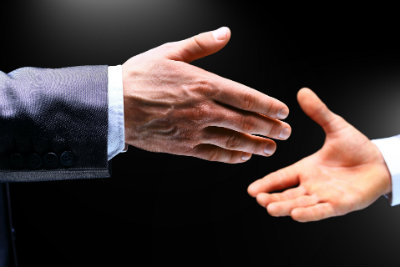
Bodily movement is ephemeral and illusive. Consider a simple action, like lifting the right arm overhead. At the beginning, as the right arm hangs by the side, there is stillness. At the ending when the arm arrives overhead, there is another momentary stillness. But the actual movement, the process of raising the arm, disappears even as it is happening.
Dance, the movement art par excellence, exists at a perpetual vanishing point. Yet, there is order and pattern to dance. The ballerina takes three steps to the right, then three steps to the left, turns and pauses. Here is a pattern, established by the repetition of certain kinds of actions.
There is also a pattern in the everyday movements that accompany speech. These patterns are more diffuse, since they occur spontaneously and without choreographic planning. Nevertheless, a perceptive observer watching someone converse will begin to see that certain movements recur. These repeated actions can be thought of as a kind of nonverbal signature, one that is uniquely characteristic.
This nonverbal signature consists of all kinds of bodily actions – postures, gestures, and posture-gesture mergers. Management consultant Warren Lamb became particularly interested in Posture-Gesture Mergers because he discerned that these body movements were more genuinely expressive than postures and gestures.
Just as individuals are distinct in terms of physical appearance and vocal quality, Lamb found that each person has a unique Posture-Gesture Merger pattern. Identifying this pattern allowed Lamb to predict not only how well a candidate would fit a particular position, but also the extent to which he/she would find the nature of work satisfying. His findings were consistent with the initial discoveries made by Rudolf Laban and F.C. Lawrence. I discuss their discoveries in the next blog.

 In his early days as a management consultant,
In his early days as a management consultant,  Gestures are isolated actions of individual body parts. Some gestures are iconic, such as pointing the finger to indicate direction or shaking the head to indicate “no.” Other isolated gestures carry specific cultural meanings. For example, the explorer Captain Cooke is said to have been killed by the Hawaiians when he attempted to shake hands, for this gesture of friendship in England carried an entirely different meaning in Hawaii.
Gestures are isolated actions of individual body parts. Some gestures are iconic, such as pointing the finger to indicate direction or shaking the head to indicate “no.” Other isolated gestures carry specific cultural meanings. For example, the explorer Captain Cooke is said to have been killed by the Hawaiians when he attempted to shake hands, for this gesture of friendship in England carried an entirely different meaning in Hawaii.